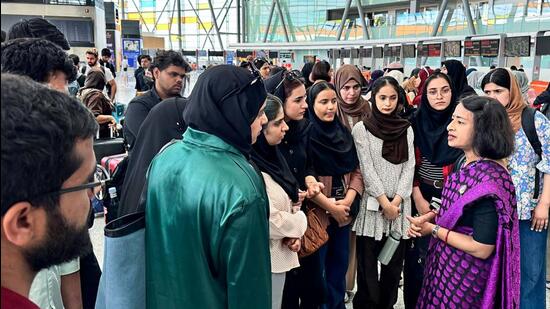- Courses
- GS Full Course 1 Year
- GS Full Course 2 Year
- GS Full Course 3 Year
- GS Full Course Till Selection
- Answer Alpha: Mains 2025 Mentorship
- MEP (Mains Enrichment Programme) Data, Facts
- Essay Target – 150+ Marks
- Online Program
- GS Recorded Course
- Polity
- Geography
- Economy
- Ancient, Medieval and Art & Culture AMAC
- Modern India, Post Independence & World History
- Environment
- Governance
- Science & Technology
- International Relations and Internal Security
- Disaster Management
- Ethics
- NCERT Current Affairs
- Indian Society and Social Issue
- NCERT- Science and Technology
- NCERT - Geography
- NCERT - Ancient History
- NCERT- World History
- NCERT Modern History
- CSAT
- 5 LAYERED ARJUNA Mentorship
- Public Administration Optional
- ABOUT US
- OUR TOPPERS
- TEST SERIES
- FREE STUDY MATERIAL
- VIDEOS
- CONTACT US
KONDA REDDI TRIBE
KONDA REDDI TRIBE

The indigenous knowledge of the Konda Reddi tribe, a Particularly Vulnerable Tribal Group inhabiting the Papikonda hill range in the Godavari region, has proven resourceful.
About Konda Reddi Tribe
- The Konda Reddis, a Particularly Vulnerable Tribal Group, reside along the banks of the Godavari River and in the hilly forest regions of Andhra Pradesh's Godavari and Khammam districts.
- Their native language is Telugu, spoken in its purest and most elegant form, with a distinct accent.
Subdivisions:
- The Konda Reddy tribe is divided into exogamous septs for managing matrimonial relationships.
- Exogamous septs are divisions of a group that regulate marriage. The term "exogamy" refers to the custom of marrying outside of one's own group.
- As in other Telugu-speaking communities, surnames come before personal names.
- While most septs are exogamous, certain septs are considered brother septs, and marriage alliances within these brother septs (agnate relations) are prohibited.
Family and Marriage:
- The family structure is patriarchal and patrilocal, with monogamy being the norm, although polygamous families exist.
- Socially accepted methods of acquiring mates include marriage by negotiations, love and elopement, service, capture, and exchange.
Religion:
- The Konda Reddis primarily practice Folk Hinduism, influenced by local traditions and the worship of local deities at the community level.
Political Organization:
- They have their own form of social control known as the 'Kula Panchayat.'
- Each village has a customary leader called the 'Pedda Kapu.'
- The position of the headman is hereditary, and the headman serves as the Pujari (priest) of the village deities.
Livelihood:
- They primarily engage in shifting cultivation and rely heavily on forest flora and fauna for their livelihood.
- To supplement their meager income, they gather and sell non-timber forest products such as tamarind, adda leaves, myrobolan, broom sticks, and more.
- Their main crop is jowar, which serves as their staple food.
Q1) What is a Particularly Vulnerable Tribal Group (PVTG)?
- PVTGs are a more vulnerable group among tribal groups in India.
- These groups have primitive traits, geographical isolation, low literacy, zero to negative population growth rate and backwardness.
- Moreover, they are largely dependent on hunting for food and a pre-agriculture level of technology.
- Currently, there are 2.8 million PVTGs belonging to 75 tribes across 22,544 villages in 220 districts across 18 states and Union Territories in India.
- According to the 2011 Census, Odisha has the largest population of PVTGs at 866,000. It is followed by Madhya Pradesh at 609,000 and Andhra Pradesh (including Telangana) at 539,000.
- The Forest Rights Act (FRA) of 2006 introduced the concept of Habitat Rights, which aims to secure the habitat and livelihood of PVTGs.
The Ministry of Tribal Affairs administers a scheme called "Development of Particularly Vulnerable Tribal Groups (PVTG)" that covers 75 identified PVTGs in 18 states and a union territory.
The indigenous knowledge of the Konda Reddi tribe, a Particularly Vulnerable Tribal Group inhabiting the Papikonda hill range in the Godavari region, has proven resourceful.
About Konda Reddi Tribe
- The Konda Reddis, a Particularly Vulnerable Tribal Group, reside along the banks of the Godavari River and in the hilly forest regions of Andhra Pradesh's Godavari and Khammam districts.
- Their native language is Telugu, spoken in its purest and most elegant form, with a distinct accent.
Subdivisions:
- The Konda Reddy tribe is divided into exogamous septs for managing matrimonial relationships.
- Exogamous septs are divisions of a group that regulate marriage. The term "exogamy" refers to the custom of marrying outside of one's own group.
- As in other Telugu-speaking communities, surnames come before personal names.
- While most septs are exogamous, certain septs are considered brother septs, and marriage alliances within these brother septs (agnate relations) are prohibited.
Family and Marriage:
- The family structure is patriarchal and patrilocal, with monogamy being the norm, although polygamous families exist.
- Socially accepted methods of acquiring mates include marriage by negotiations, love and elopement, service, capture, and exchange.
Religion:
- The Konda Reddis primarily practice Folk Hinduism, influenced by local traditions and the worship of local deities at the community level.
Political Organization:
- They have their own form of social control known as the 'Kula Panchayat.'
- Each village has a customary leader called the 'Pedda Kapu.'
- The position of the headman is hereditary, and the headman serves as the Pujari (priest) of the village deities.
Livelihood:
- They primarily engage in shifting cultivation and rely heavily on forest flora and fauna for their livelihood.
- To supplement their meager income, they gather and sell non-timber forest products such as tamarind, adda leaves, myrobolan, broom sticks, and more.
- Their main crop is jowar, which serves as their staple food.
Q1) What is a Particularly Vulnerable Tribal Group (PVTG)?
- PVTGs are a more vulnerable group among tribal groups in India.
- These groups have primitive traits, geographical isolation, low literacy, zero to negative population growth rate and backwardness.
- Moreover, they are largely dependent on hunting for food and a pre-agriculture level of technology.
- Currently, there are 2.8 million PVTGs belonging to 75 tribes across 22,544 villages in 220 districts across 18 states and Union Territories in India.
- According to the 2011 Census, Odisha has the largest population of PVTGs at 866,000. It is followed by Madhya Pradesh at 609,000 and Andhra Pradesh (including Telangana) at 539,000.
- The Forest Rights Act (FRA) of 2006 introduced the concept of Habitat Rights, which aims to secure the habitat and livelihood of PVTGs.
The Ministry of Tribal Affairs administers a scheme called "Development of Particularly Vulnerable Tribal Groups (PVTG)" that covers 75 identified PVTGs in 18 states and a union territory.



